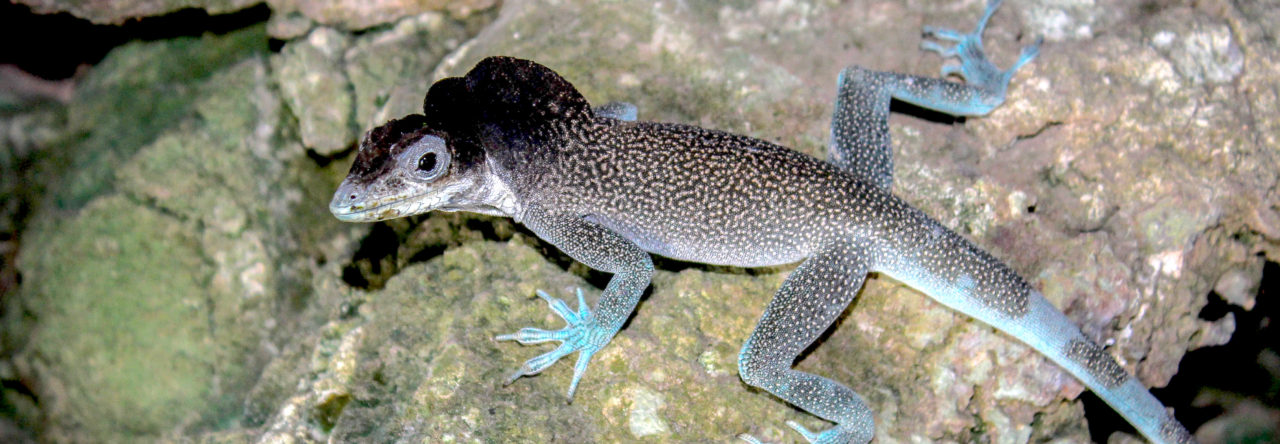
Anolis equestris with a radio transmitter attached. Photo courtesy Paul Richards.
Knight anoles, Anolis equestris, are truly the king of anoles. The largest anole species*–with a total length approaching two feet–and a grotesquely handsome and imposing head, these lizards are surely the reigning emperor of anoles.
Little, however, is known about the natural history of these species, other than they will eat anything they can get their jaws on. Introduced into Florida many years ago, Miami populations of knight anoles would seem to be ripe for study, but little work has been published.
Nicholson and Richards have taken a step in filling this void, reporting the results of a year-long radio-tracking study conducted on the grounds of the University of Miami. The authors developed a backpack mounted radio transmitter that they strapped onto the back of knight anoles, and then located them over the course of many months. The units were small (6 g or less) and didn’t seem to hinder the lizards, which were seen mating and engaging in other activities while backpack-clad.
The primary focus of the paper is home range of these lizards, and they report several results. First, knight anoles have a large home range, on average, of about 650 square meters. This result is not surprising, as home range size seems to be strongly correlated with body size among the 15 anole species for which data are available, and the two other large anoles have comparably large ranges.
More surprising is that there is little difference in the size of home ranges of males and females, unlike what is seen in many other anole species, in which male home range is larger, often substantially. Nicholson and Richards attribute this to the arboreality of this species, although other arboreal species, albeit smaller, have also been studied with variable results. I wonder, too, whether gender differences in home range size might correlate with degree of sexual size dimorphism. Certainly, several of the species with low dimorphism had female ranges larger than those of males.
The authors also found substantial overlap in territories of individuals, both within and between sexes, an intriguing finding that suggests that detailed studies of behavior of this species–of which almost nothing is known–would be very interesting. More generally, the biology of the knight anole is mostly a blank slate. These lizards are reasonably common in Miami, and there is great work to be done. Particularly interesting would be the community effects of this species–how does its presence affect the other anole species with which it occurs?
*The largest anole species is actually a matter of dispute, as it may be one of the knight anole’s sibling species, such as A. luteogularis. In all, the equestris species complex is comprised of six species, five of which are very large.

Knight anoles can bite hard and Kirsten Nicholson values her hands. This is how the transmitter’s are placed on the lizard. Photo courtesy Paul Richards.
Kirsten E. Nicholson and Paul M. Richards (2011). Home-range size and overlap within an introduced
population of the Cuban Knight Anole, Anolis
equestris (Squamata: Iguanidae) Phyllomedusa, 10 (1), 65-73












 Check out what Janson Jones has to say about the largest anole, as well as a cool video,
Check out what Janson Jones has to say about the largest anole, as well as a cool video,